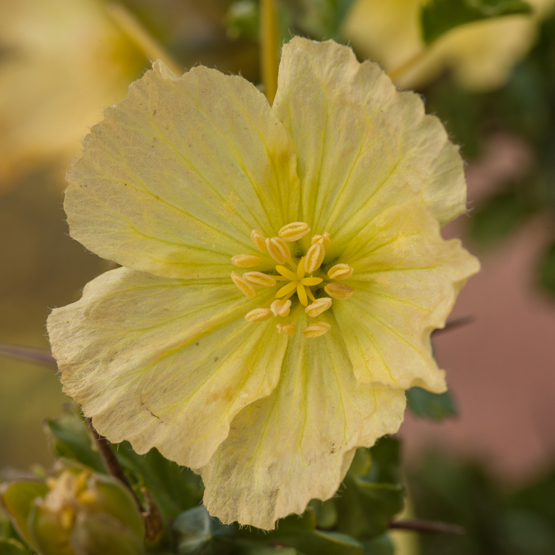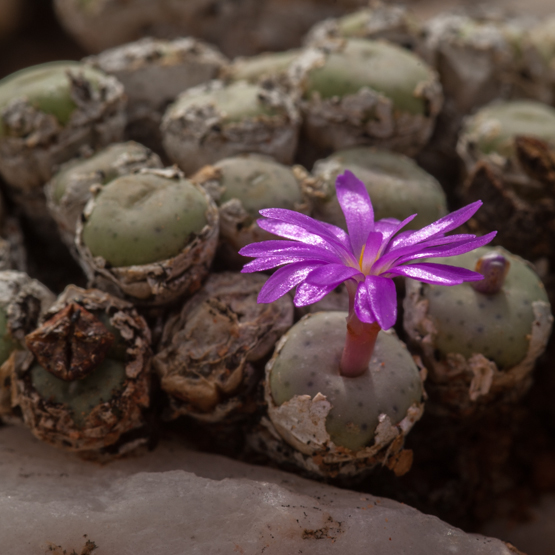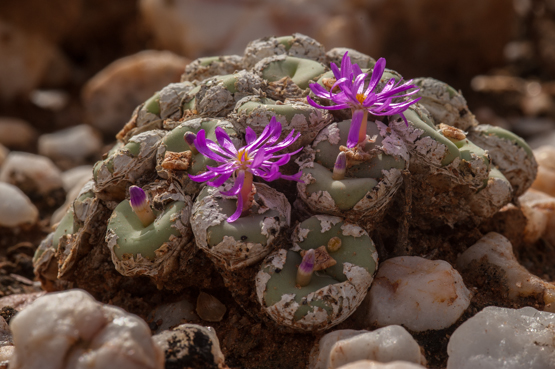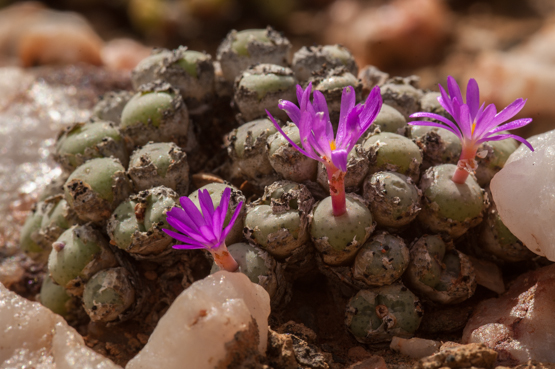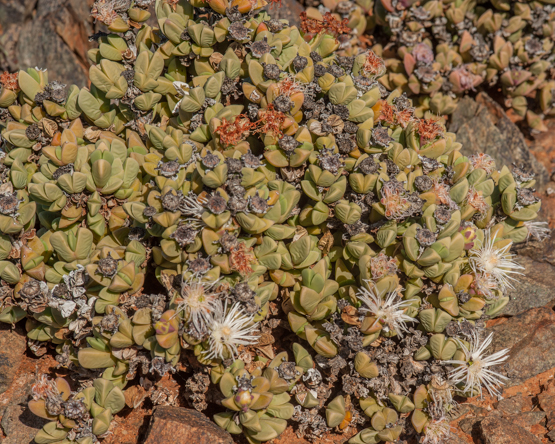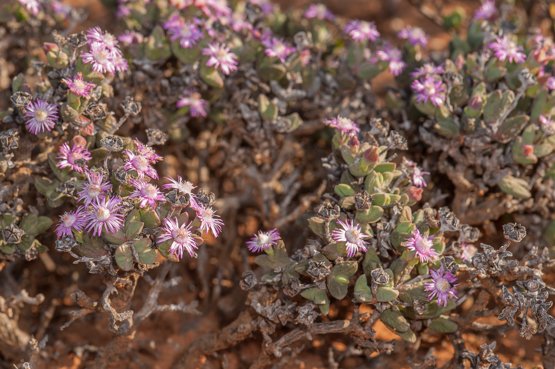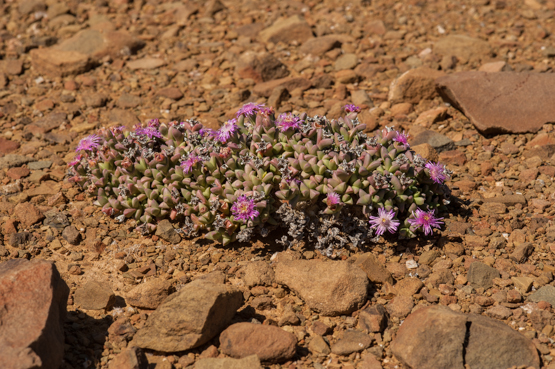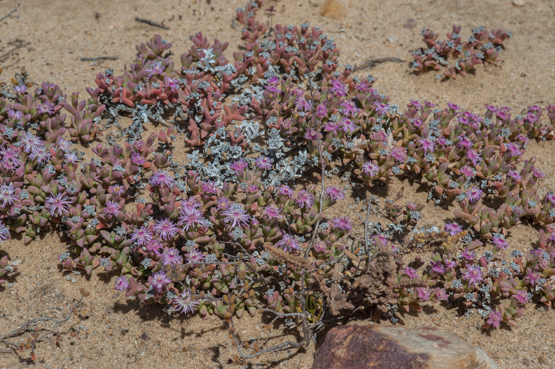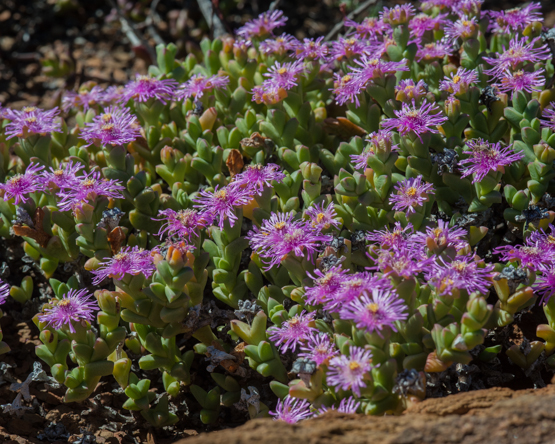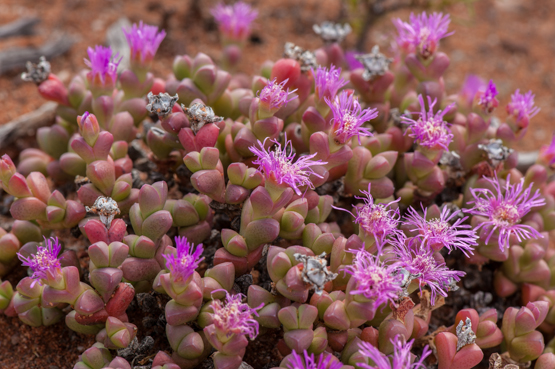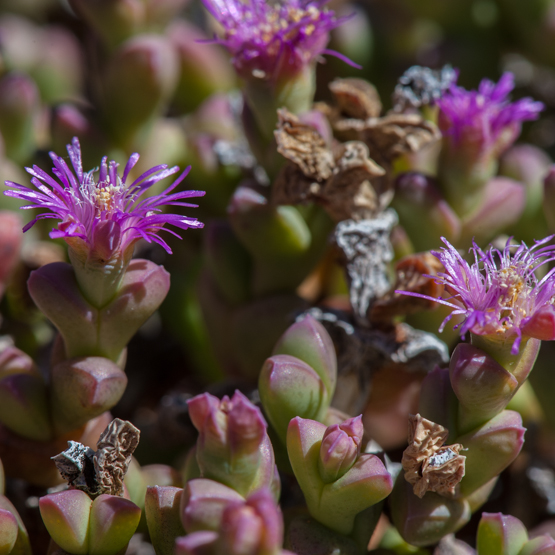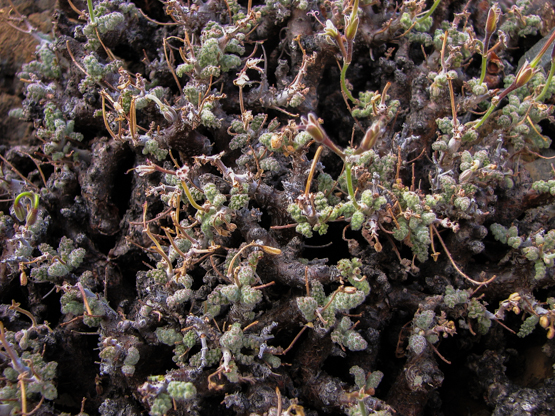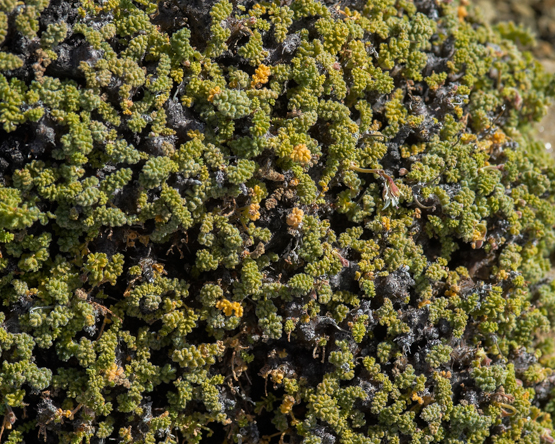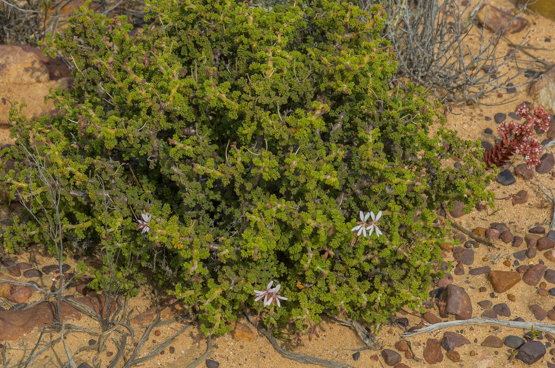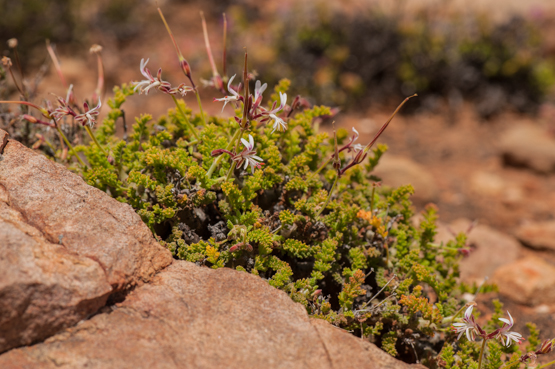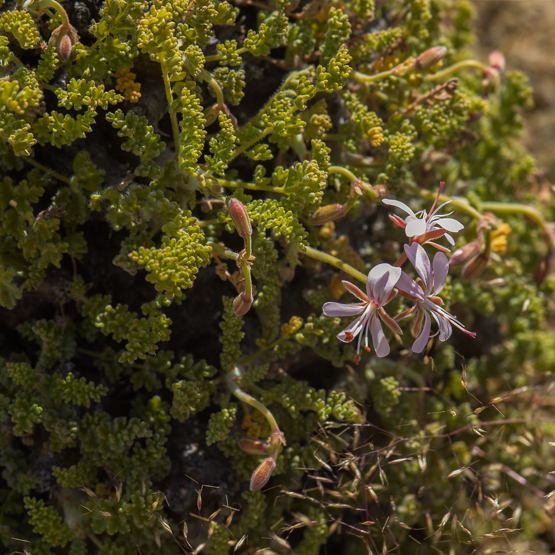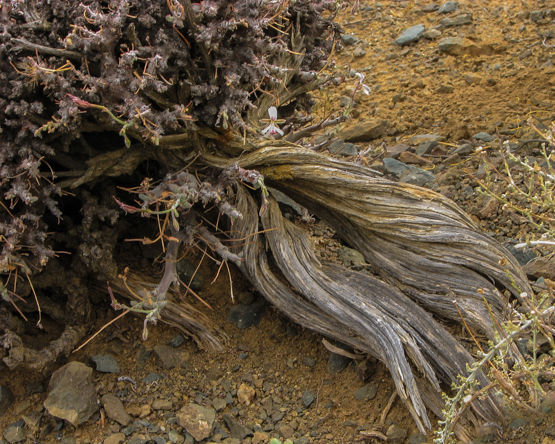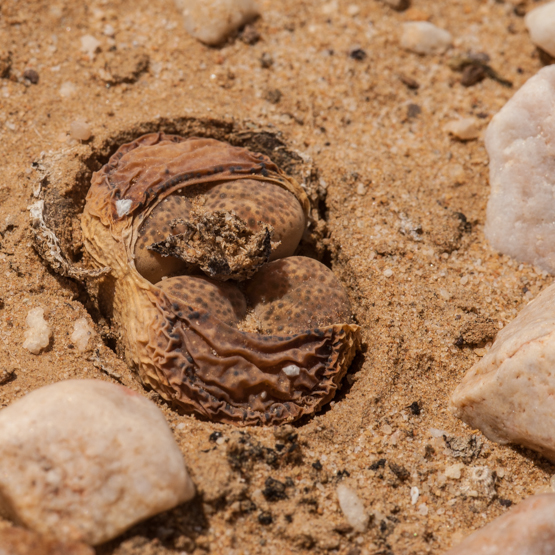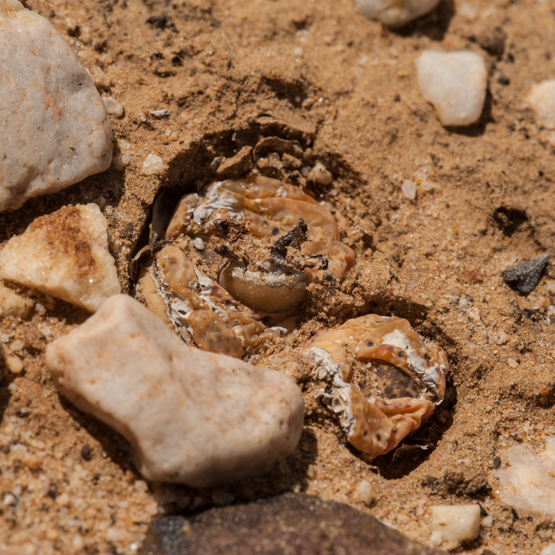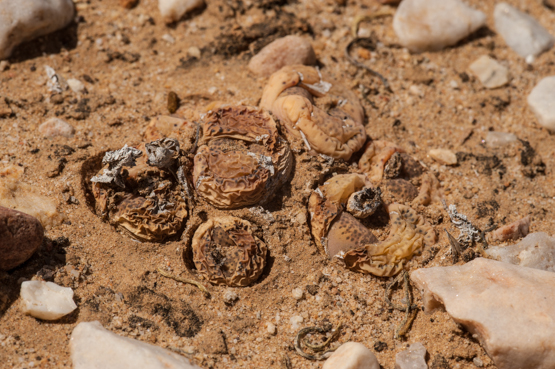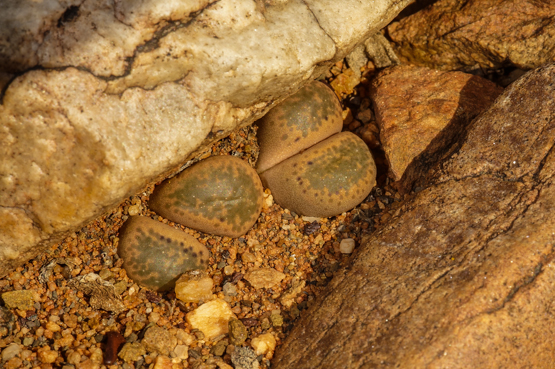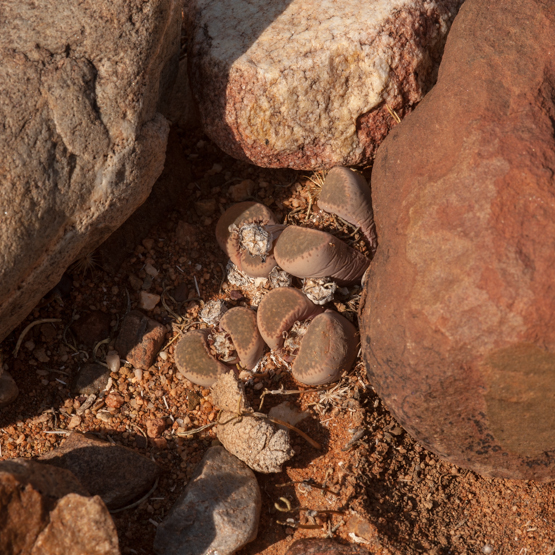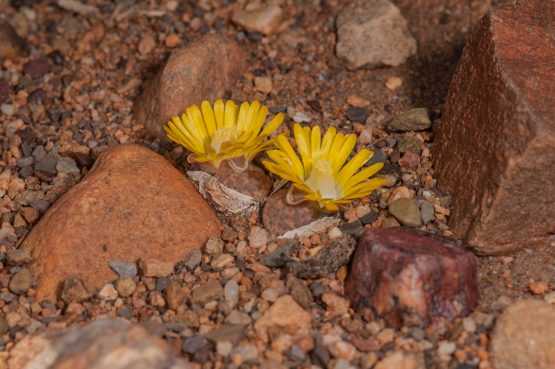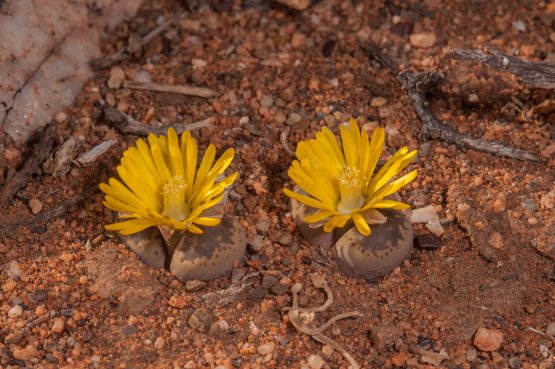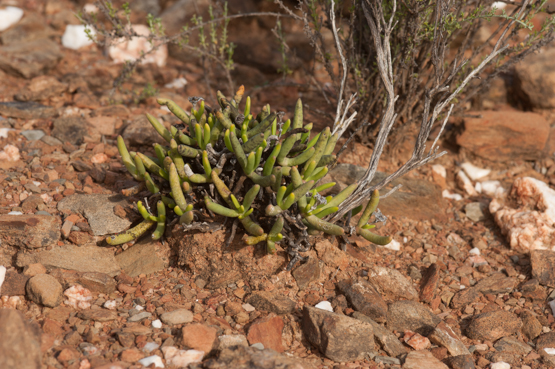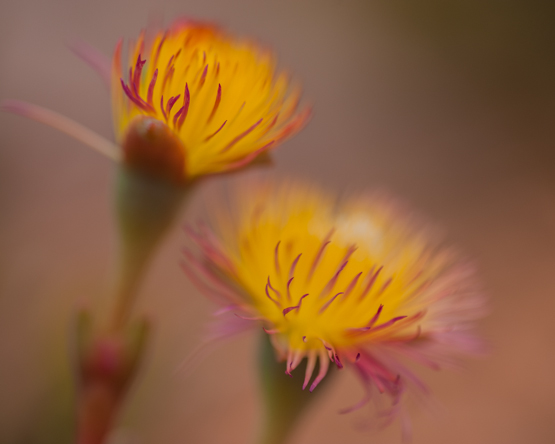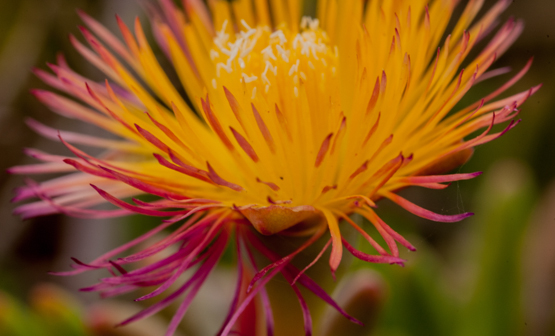This planr is only known from northwestern Namaqualand, where it grows in the coastal plain between the mountains and the sea, from Lekkersing southwards to Wallekraal. The plants are usually not taller than 18 cm. The flowers are about 3.5 cm in diameter and are characterized by the cilia along the rim of the petals. According to literature the flowers appear in March, September and in summer, but all but one of the pictures shown here and in the next post were made in July and August.
Month: March 2014
Conophytum minutum v. minutum (2)
Conophytum minutum v. minutum (1)
Plants of this variety occur widespread from Papendorp and Vanrhynsdorp in the south to Garies and Gamoep in the north and are also found at the coast, near the mouth of the Groenrivier. They grow on a variety of substrates, either in the open on in the shade of shrubby mesembs.
The flowers appear in autumn and range in colour from pale pink to reddish magenta and even (rarely) white.
All photos made on the same day (30 March 2012).
Polymita albiflora
The genus Polymita has only two members, both of which are slow growing shrubs up to 45 cm tall, starting out as small cushions. They occur on the eastern edge of the winter rainfall area in northern Namaqualand on gneiss hills and quartz flats or slopes.
P. albiflora occurs in the drier part of the distribution area: on average less than 100 mm rainfall per year. The species is characterized by the hard prickly mucro (leaf tip), which is absent in P. steenbokensis, and by the generally fewer number of petals (50-100 rather than 70-140). The literature only mentions white petals (as the name implies), but pink also occurs.
Unfortunately the plants rarely flower in cultivation.
Ruschia impressa
Some people seem think that the second part of this name means impressive, but in reality it means impressed. (Don’t ask me what it refers to!).
At first sight it just seems to be another one of those many small, nondescript shrubby Mesembs. Only when you take the time to look at it properly you will see how cute it really is. I quite agree with the remark in the Illustrated of Succulent Plants: “The compact shape suggests that the species has a potential as garden or rockery plants”.
The plants do not get any taller than 6 cm. Maybe the best way to recognize them is the fact that the keel of the leaves is adorned with a small (sometimes inconspicuous) tooth.
The species is endemic to the western part of the Little Karoo (Ladismith, Montagu).
Pelargonium alternans (2)
Pelargonium alternans (1)
One can come across this species from the Bokkeveld Mountains to near Prince Albert on sandstone, shale and quartz slopes and outcrops. The rainfall in this area is between 100 and 200 mm a year, mainly during winter. Although the summers are very hot, there is often some frost in winter.
The plants may become up to 40-50 cm tall and wide and can apparently get very old. (See picture 4)
Flowering is mostly from April to January, but may occur at any time after rain.
Lithops localis (2)
Lithops localis (1)
This is the Lithops species with the most southerly distribution area of the whole genus, in the lower Great Karoo from Laingsburg to Steytlerville. It is easily recognized because of the very dense pattern of miniature windows. Mature plants usually have 2-5 bodies, but may occasionally have more than twenty. They flower in April and May.
The naming of the species is a very confusing issue; suffice it to say here that the name L. terricolor is also in use.
All pictures below were taken on the Witteberge plateau south of Laingsburg, very near to the type locality.
No 1: 4 Sept. 2011; no 2: 29 July 2010; nos 3, 4: 21 April 2012
Hereroa odorata
Not many people will get excited, I suppose, by a plant like the one in the first picture.
But when you see the flowers you might well change your opinion. The first two pictures below seem to be exactly the same. In fact there is a small but not unimportant difference: the first of them was taken with the lens wide open (F2.8), whereas in the second one a smaller aperture was used (F11). To me the first of the pair has a rather more dream-like atmosphere. What do you think?
In the last one the camera was tilted to give a better view of the beautifully coloured outer petals.
In all species of Hereroa the flowers open in the afternoon or even later. (The pictures were taken at about 5 pm).


